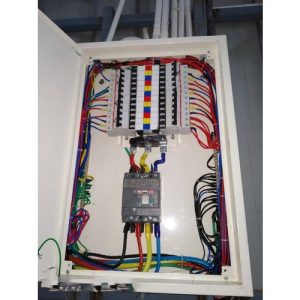In the ever-evolving landscape of technology, the seamless flow of information is paramount. Whether you’re streaming a video, sending an email, or conducting a video conference, the backbone of modern connectivity lies in network infrastructure. At the heart of this infrastructure is a crucial component known as the network switch. In this blog post, we’ll delve into the fundamentals of what is a network switch, exploring their role, types, and importance in keeping our digital world connected.
What is a Network Switch?
A network switch is a hardware device that plays a pivotal role in connecting devices within a local area network (LAN). It operates at the data link layer of the OSI model and is designed to efficiently manage and direct data traffic between devices, ensuring a smooth and uninterrupted flow of information.
Key Functions of a Network Switch:
- Packet Switching: Network switches use packet switching to transmit data efficiently. Data is divided into packets, and the switch determines the optimal path for each packet to reach its destination.
- Address Learning: Switches learn the hardware (MAC) addresses of connected devices and build a table, known as a MAC address table or content addressable memory (CAM) table. This table is crucial for making forwarding decisions.
- Frame Filtering: By analyzing the MAC addresses in incoming frames, switches can filter and forward data only to the specific devices for which the data is intended. This helps minimize network congestion and enhances overall performance.
Types of Network Switches:
- Unmanaged Switches: Unmanaged switches are simple, plug-and-play devices that operate without the need for configuration. They are ideal for small networks where basic connectivity is the primary requirement.
- Managed Switches: Managed switches offer more control and customization options. Network administrators can configure managed switches to optimize performance, implement security features, and monitor network activity.
- Layer 2 and Layer 3 Switches: Layer 2 switches operate at the data link layer and make forwarding decisions based on MAC addresses. Layer 3 switches, also known as routing switches, operate at the network layer and can make decisions based on IP addresses, allowing for more advanced routing capabilities.
Importance of Network Switches:
- Enhanced Performance: By efficiently managing data traffic and reducing collisions, network switches contribute to improved network performance and reduced latency.
- Scalability: Network switches provide the scalability needed to accommodate growing networks. Additional switches can be added to expand the capacity of the network seamlessly.
- Security: Switches enhance network security by isolating traffic and preventing unauthorized access. Managed switches offer features like Virtual LANs (VLANs) and Access Control Lists (ACLs) for enhanced security.
- Reliability: The robust design of network switches ensures reliable and consistent connectivity, critical for the smooth operation of applications and services.
Conclusion:
In conclusion, network switches serve as the backbone of local area networks, facilitating efficient communication between devices. Their role in directing data traffic, learning addresses, and ensuring reliable connectivity makes them an indispensable component of modern digital infrastructure. As technology continues to advance, the evolution of network switches will play a crucial role in shaping the future of connectivity.





